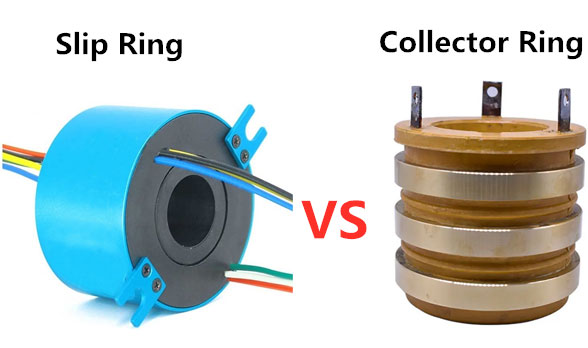The Difference Between Slip Ring and Traditional Collector Ring
What is a slip ring?
A pneumatic electric slip ring is composed of an elastic brush, combined bracket, and multi-ring body, with a dustproof cover, precision bearing, flange, or fork plate. The main function of the slip ring is to achieve contact between the relative rotational power, electrical signal, or current transmission between two elements. At present, slip rings are widely used in precision transmissions that require large axial spacing, small radial dimensions, and small friction torque.

The manufacturing process is different.
The traditional slip ring adopts the carbon brush technology that is close to the copper ring, while the modern precision conductive slip ring adopts the sliding transmission method of precious metal alloy contacting electric energy and signal.
The transmission content is different.
The traditional collector ring generally limits the transmission of large current, and a large amount of carbon alloy powder is generated due to its friction during the transmission process, and the carbon brush needs to be cleaned or replaced regularly. From the perspective of its transmission effect, due to the friction of its contact points, the friction is not smooth, and the resistance is uneven, which leads to problems such as easy heat generation and lightning flashes. On the basis of the original rotation transfer function, the precision conductive slip ring is a conductive slip ring with a wider transmission medium, more accurate transmission structure, more flexible transmission mode, and better transmission effect.
The size of the structure is different.
Traditional collector rings require a lot of currents, so copper rings of outer diameter and thickness are required as contact friction bodies. Therefore, compared with the precision conductive slip ring, the overall volume is relatively large. However, with the rapid development of modern precision electronic technology and precision electromechanical products, higher requirements are placed on slip rings. The current precision conductive slip rings not only need a small size and compact structure but also need the multi-channel transmission of different energy sources and signals.
Advantages of slip rings
- Long life: Once the precision conductive slip ring used in aerospace (such as a satellite) is launched, it needs to work in space for more than 10 years and cannot be maintained. Therefore, the life of this slip ring is very high, and the life needs to reach more than 150 million rpm. Stable performance, no trouble. Once the failure or lifespan is not up to the requirements, it will lead to the collapse of the entire micro-system.
- High speed: In the fields of high-speed railways, aero engines, large aircraft, high-speed weapons, high-speed and high-precision turntables, etc., the speed of conductive slip rings is very high, and the speed is required to exceed 1000rpm. However, when the rotation speed is too high, there are two main problems, one is the destruction of the mechanical structure, and the other is the heating of the transmission contact point.
- Miniaturization of structure size: Due to the high precision of high-end manufacturing, the space requirements for parts are very strict. The miniaturization of the structure size of the precision conductive slip ring is also the basis for realizing the high speed and longevity of the slip ring. However, the manufacturing process of small and precise conductive slip rings is very complicated. This is a domestic technical bottleneck. Our own self-developed integrated casting process has been able to achieve 0.1mm insulation thickness and high insulation. Therefore, this technology greatly reduces the structural size of the precision conductive slip ring.

